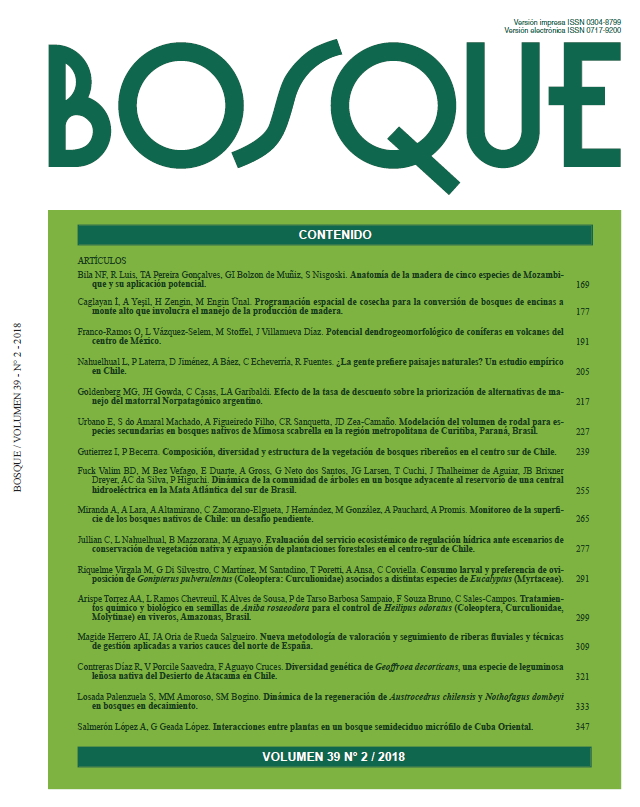Discount rate effect on the prioritization of management alternatives in North-Patagonia Argentinian shrubland
Main Article Content
Abstract
The management of native forests in Northern Patagonia has great potential to provide multiple products with high market value, whose regional demand is growing continuously. Considering that economic profitability is key to guide sustainable forest management decisions, in this paper the effect of the discounting rate, which is a measure of the opportunity cost of funds and resources used in a project, was evaluated over the profitability of forest management options. Five management alternatives of native mixed shrublands through variable discount rates were analyzed. The costs and revenues were obtained from a woodshed experiment extraction in El Foyel, Río Negro (41°38’48.44” S; 71°29’59.06” O), consultation and local publications. It was found that with lower discount rates to 2.9 % the most attractive management alternative was the management that combined woodshed extractions and afforestation of Austrocedrus chilensis while at a higher discount rate, the most attractive alternative was the woodshed shrub management with intensive extraction. There was no rate that positioned the alternative replacement of the shrubland for afforestation of Pinus ponderosa as the best alternative. This work suggests that there are management alternatives of native forest that would be more profitable than that for single species forest plantations of P. ponderosa.

